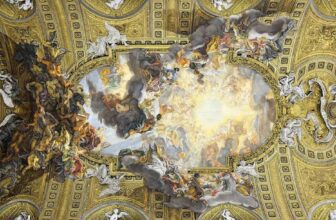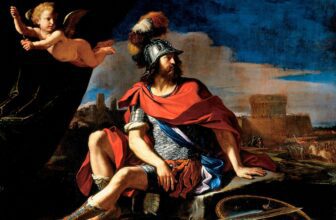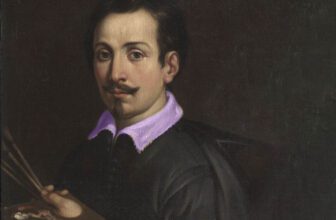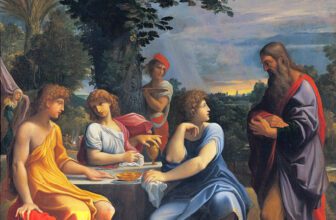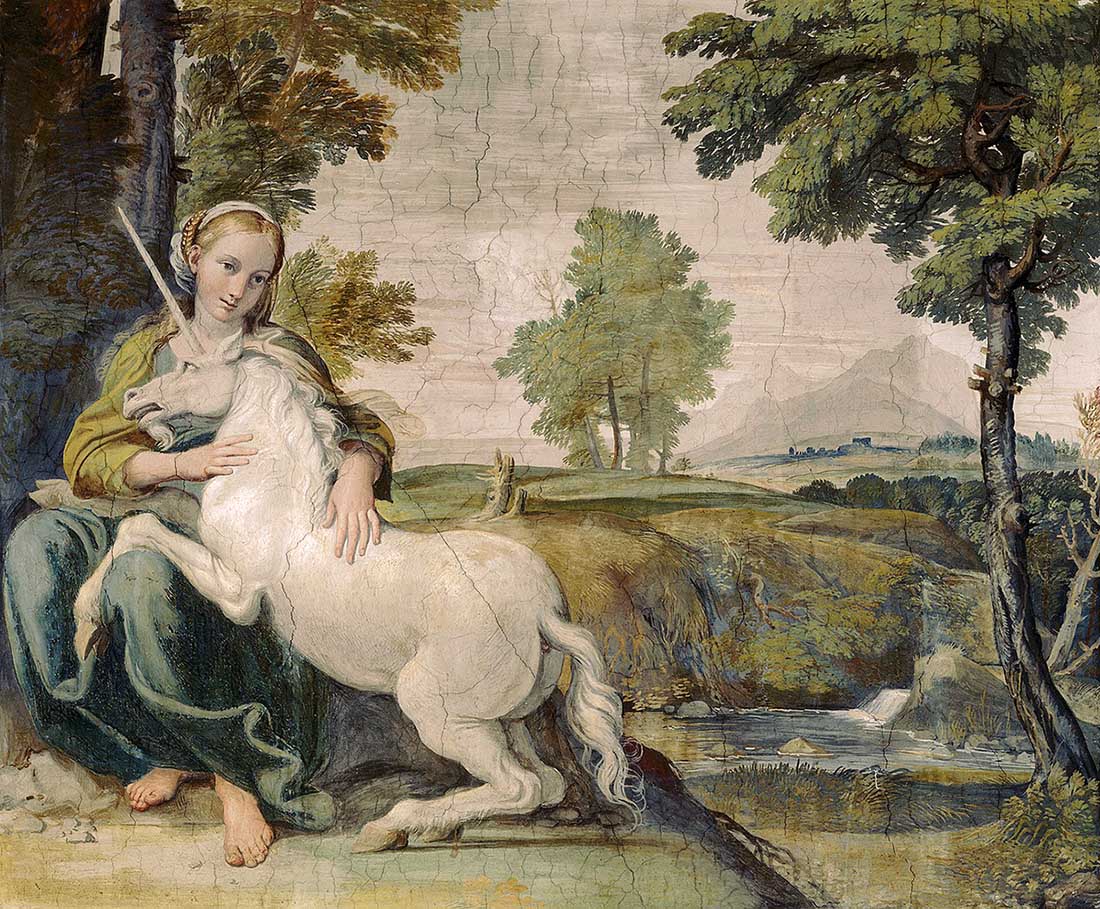
Domenichino: The Soulful Brush of the Italian Baroque
In the grand tapestry of Baroque art, woven with the names of Caravaggio, Bernini, and Rubens, there exists a quieter yet profoundly lyrical voice, Domenichino. His story is not one of scandal or flamboyant fame, but of deep artistic commitment, classical ideals, and enduring beauty. A master of narrative, composition, and subtle emotionality, Domenichino’s life and paintings tell us more than just religious or mythological tales, they whisper of discipline, genius, and a devotion to the essence of art.
The Story of Domenichino
Domenichino was born Domenico Zampieri in Bologna, Italy, on October 21, 1581. From a young age, Domenico was drawn to the arts, and his early training in Bologna under Denis Calvaert, a Flemish painter, laid the foundation for his career. However, it was his move to the Accademia degli Incamminati, founded by the Carracci family, that would change his trajectory. Under Ludovico Carracci, Domenichino refined his classical technique, emphasizing the balance between emotion and reason, light and shadow.
Eventually, like many aspiring artists of his time, Domenichino made his way to Rome, the throbbing heart of art, politics, and religion. There, he studied under Annibale Carracci, another monumental influence, and began to shape his distinct style, poetic, structured, and rich in spiritual introspection.
Yet, Domenichino’s life was not without hardship. Despite his extraordinary talent, he was often overshadowed by more dramatic personalities, most notably Caravaggio. He was also subjected to accusations of plagiarism, a charge that plagued him for years, particularly from the school of Guido Reni, a fellow Bolognese painter. Still, Domenichino’s work stood the test of time. He died in Naples in 1641, under mysterious circumstances, with some scholars suggesting he may have been poisoned due to professional jealousy.
What Is Domenichino Known For?
Domenichino is best known for his religious and mythological compositions, painted with remarkable clarity, compositional harmony, and emotional subtlety. In a time when theatricality and intense realism were in vogue, exemplified by Caravaggio’s dramatic chiaroscuro, Domenichino chose a path rooted in the High Renaissance ideals of Raphael and the classical serenity of the Carracci school.
He is celebrated for his narrative ability: the capacity to tell complex stories through visual art with clarity and emotional resonance. He was also a gifted fresco painter, working on massive, ambitious projects that demanded not only technical skill but also architectural understanding and theological sensitivity.
Moreover, Domenichino was a superb draughtsman. His preparatory sketches and drawings are still studied today for their precision and beauty. Every gesture in his work is purposeful, every expression calibrated to convey a spiritual or psychological truth.
Domenichino’s Most Famous Paintings
1. The Last Communion of St. Jerome (1614)
Perhaps Domenichino’s most famous painting, this piece is housed in the Pinacoteca Vaticana, Vatican City. It depicts the dying Saint Jerome receiving his final communion. The composition echoes Raphael’s Transfiguration in its grace and balance. The work is a masterpiece of spiritual drama, capturing the saint’s devotion and the sacred gravity of the moment.
The painting drew both admiration and controversy. Critics, including rivals, accused Domenichino of copying Agostino Carracci’s earlier version. However, art historians have largely dismissed these claims, acknowledging the originality of Domenichino’s composition.
2. St. Cecilia Playing the Organ
A delicate and lyrical portrayal of Saint Cecilia, the patroness of music, this painting celebrates Domenichino’s ability to blend divine serenity with artistic refinement. It exemplifies the Baroque ideal of art that elevates and inspires.
3. The Hunt of Diana (1617)
Housed in the Borghese Gallery in Rome, this mythological scene showcases a group of female hunters in an idyllic landscape. The painting was rare for its time due to the large number of female figures, painted with an almost modern sensibility. The balance of movement, naturalism, and classical beauty in this canvas is extraordinary.
4. The Martyrdom of Saint Agnes
This intense work captures the brutal death of a young Christian martyr. Domenichino shows remarkable restraint in depicting violence, choosing instead to emphasize Agnes’s spiritual strength and divine tranquility.
5. Frescos in the Church of Sant’Andrea della Valle
Between 1621 and 1628, Domenichino painted a series of frescoes in the Chapel of Saint Andrew in Rome, one of the pinnacles of Baroque religious art. These frescoes depict scenes from the life of Saint Andrew and remain some of his most ambitious and revered works.
What Is Domenichino’s Most Expensive Painting?
As of now, The Hunt of Diana is considered the most valuable painting by Domenichino. Though it has never been sold on the open market (being part of the Borghese Collection), art market analysts and historians estimate its value to be well over $30 million USD, due to its condition, scale, and importance in art history.
Another valuable piece is The Last Communion of St. Jerome, which, though also unsellable due to its location in the Vatican, is insured and valued similarly in scholarly assessments.
While Domenichino’s works are not as commercially explosive as those of Caravaggio or Rembrandt, in the art historical realm, they are of immense cultural and scholarly value, especially within Italian collections.
How Many Paintings Did Domenichino Create?
Domenichino was a prolific painter and frescoist. Over the course of his career, he is known to have completed:
Approximately 100–120 oil paintings
Over 20 large-scale fresco cycles
Hundreds of preparatory drawings and sketches
Many of his works were collaborative or created with the help of studio assistants, which was common practice during the Baroque era. Nevertheless, the sheer volume and consistent quality of his oeuvre speak to his industriousness and dedication.
His most active period was between 1605 and 1635, during which he completed major commissions in Rome, Bologna, and Naples.
Where Can You See Domenichino’s Paintings Today?
Domenichino’s paintings are spread across major museums, churches, and private collections in Italy, Europe, and the United States. Here are some of the most notable locations:
Italy
Borghese Gallery, Rome – The Hunt of Diana, among others.
Church of Sant’Andrea della Valle, Rome – Saint Andrew fresco cycle.
Pinacoteca Vaticana, Vatican City – The Last Communion of St. Jerome.
Museo Nazionale di Capodimonte, Naples – Several religious works.
Galleria Nazionale d’Arte Antica, Palazzo Barberini, Rome – Multiple works.
United Kingdom
National Gallery, London – The Adoration of the Shepherds, among other works.
France
Louvre Museum, Paris – Several paintings and drawings.
United States
National Gallery of Art, Washington, D.C. – Religious works and studies.
The Metropolitan Museum of Art, New York – Fresco fragments and sketches.
Los Angeles County Museum of Art (LACMA) – Baroque paintings.
Germany and The Netherlands
Collections in Berlin, Munich, and Amsterdam also house select works by Domenichino.
Many churches in Rome, Naples, and Bologna still preserve his frescoes in situ, offering viewers the rare chance to see these masterpieces in their original context.
What Is Domenichino’s Legacy?
Though Domenichino was once dismissed as a less exciting contemporary of Caravaggio and Guido Reni, modern scholarship has re-evaluated his contributions. Today, he is hailed as one of the greatest narrative painters of the Baroque period.
1. Spiritual Narration
His ability to communicate complex theological and emotional truths through visual means was almost unparalleled. He brought serenity and structure to religious storytelling, offering a counterbalance to the visceral emotionalism of his peers.
2. Classical Restraint in a Dramatic Age
In an era obsessed with spectacle, Domenichino upheld the virtues of balance, clarity, and intellect. He championed a kind of beauty that was more meditative than sensational, more eternal than immediate.
3. Influence on Later Artists
Domenichino deeply influenced Poussin, Carlo Maratta, and the academic tradition in both France and Italy. His approach to drawing and narrative composition became a model for later Baroque and Neoclassical painters.
4. Rehabilitation by Art Historians
During the 18th and 19th centuries, his reputation waned. But in the 20th century, art historians like Rudolf Wittkower and John Pope-Hennessy restored his stature. His works are now regarded as essential to understanding the evolution of Baroque art and the classical tradition.
The Baroque Genius
Domenichino was not the most flamboyant or revolutionary of his time, but he was one of the most profound. He lived and worked in the shadow of giants, yet carved his own distinct place in the history of art, through precision, devotion, and unmatched narrative power.
He reminds us that greatness isn’t always loud. Sometimes, it whispers through gentle hands and carefully chosen hues. Domenichino may not have dazzled the world in his lifetime as Caravaggio did, but his paintings continue to speak, to souls searching for grace, order, and truth.
In the frescoed ceilings of Rome, in the luminous faces of saints and martyrs, and in the mythic landscapes of his canvases, Domenichino lives on, a quiet master whose voice still echoes, softly but surely, across the centuries.
